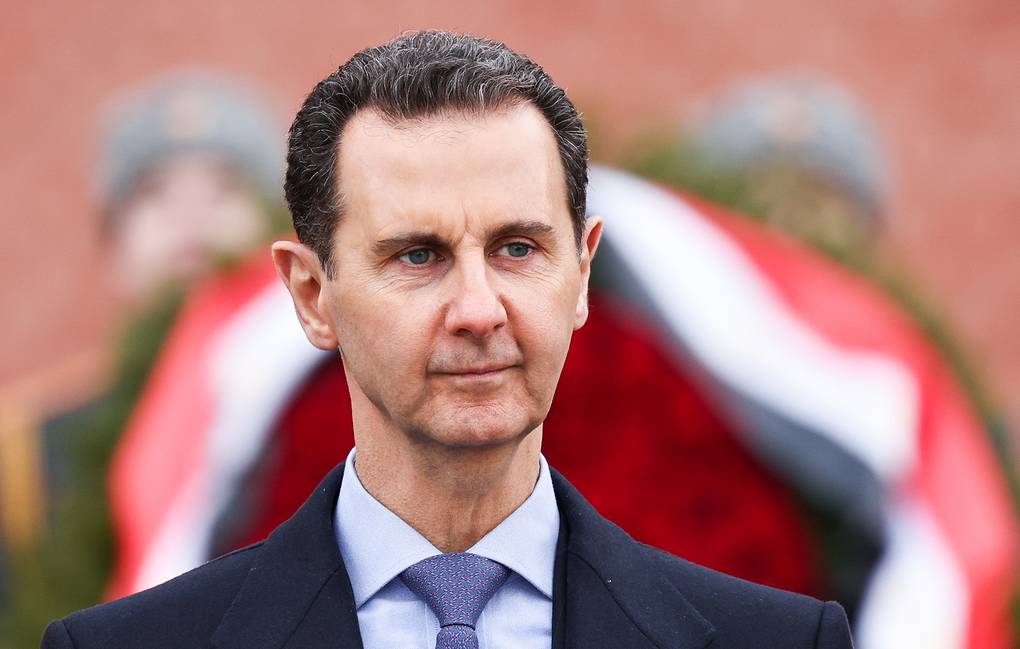On December 8, 2024, Syrian President Bashar Assad resigned and left the country. His last instruction was that the transfer of power should be peaceful, the Russian Foreign Ministry said. This was after opposition militias entered Damascus 12 days after launching an offensive from the northwestern province of Idlib. The TASS FACTBOX editorial staff has compiled a fact sheet that provides a look at the situation in Syria under Bashar Assad.
Bashar Assad's rise to power, the first period of his rule
Bashar Assad took over the leadership of the Syrian Arab Republic (SAR) in the summer of 2000 after the death of his father Hafez Assad, who had been the head of power since 1971. In order to allow Bashar Assad, who was 34 years old at the time, to run for president, the People's Assembly (parliament) adopted constitutional amendments that lowered the age limit for candidates from 40 to 34. The conference of the ruling Baath Party declared Assad "the leader of the party and the people" and appointed him head of state. On 10 July, his candidacy as the sole presidential candidate was approved in a popular referendum in which 97 % voters voted in his favour. On 17 July 2000 he took office for a seven-year term. In May 2007, Assad was re-elected for a second term, winning the support of 97.6 % voters.
Assad has begun his rule with a series of reforms. Independent newspapers began to be published, NGOs, human rights organisations and non-governmental universities were set up, private banks and the stock exchange opened. However, under the influence of conservative political circles, Assad did not dare to further relax the authoritarian regime that had taken shape under his father. Censorship was soon restored and supporters of free elections and the lifting of the state of emergency (introduced in 1963) began to be persecuted and imprisoned.
Assad has condemned the US invasions of Afghanistan in 2001 and Iraq in 2003. In 2004, Washington imposed sanctions on Syria, accusing Damascus of supporting terrorism, developing weapons of mass destruction and undermining the international community's efforts to stabilise Iraq, as well as occupying Lebanon (Syria introduced troops into Lebanese territory in 1976 during the civil war). In March 2005, Assad withdrew his troops from Lebanon under pressure from the international community.
The beginning of the civil war in 2011, the first years of the clash with the armed opposition
In March 2011, against the backdrop of the Arab Spring (anti-government protests in Arab countries that began with protests in Tunisia in December 2010), mass demonstrations in support of the demand for the resignation of the president began in a number of cities in Syria, including Damascus, Aleppo, Hama, Deir ez-Zor and Deraa. According to experts, the discontent was caused by Assad's authoritarian rule and the predominance of the Alawite minority (10-12 % population) in government organisations and the army. In an attempt to defuse the protests, the Assad government made a number of concessions. The state of emergency was lifted, a new constitution was adopted introducing a multi-party system and holding contested presidential elections (in 2014, Assad won 88 % votes in the first such election and took office for the third time; under the new constitution, this was his first term in office). However, the measures taken have failed to ease tensions. Anti-government demonstrations continued and eventually turned into an armed confrontation between government forces and various armed opposition groups. Civil war broke out. Political and military support for the opposition from outside - mainly from Saudi Arabia, Qatar, Turkey, the United States and a number of EU countries - contributed to the escalation of the conflict.
During the 2012-2014 military confrontation, several rounds of UN-brokered talks between the opposition and the Assad government took place in Geneva. The parties failed to reach agreement on how to resolve the conflict. Meanwhile, terrorist organisations, including the Islamic State (IS; banned in Russia) and Jabhat al-Nusra (now Hayat Tahrir al-Sham; banned in Russia), have joined the fight against government forces in Syria. By mid-2015, only about 20 % territories remained under government control.
Russian Air and Space Forces operations, stabilization in 2015-2020
Under these conditions, Russian air and space operations were launched in Syria in September 2015 at the request of President Assad. With Russian support, the Syrian army regained approximately 70 % of the country's territory. In the changed military situation, Russia, Turkey and Iran, which had considerable influence in Syria (Ankara supported Syrian opposition armed groups in northern Syria, while Tehran provided military assistance to the Syrian government), started negotiations on a new platform - the Astana Process. It involved Damascus officials and representatives of the Syrian opposition ready for dialogue with the Assad government. Moscow, Ankara and Tehran became the guarantors of the peace settlement. The negotiations have produced tangible results in stabilising the situation. In particular, agreements were reached on the establishment of de-escalation zones - areas where hostilities between government forces and armed opposition formations have been halted. With the participation of the three countries, it was possible to draw up principles for humanitarian demining and to set up a working group on the release of detainees and hostages. The Astana Platform talks contributed to improving the humanitarian situation and creating the conditions for the resumption of the political process in Syria. In addition, a constitutional committee was established in 2019 by representatives of the opposition and the government to propose amendments to the constitution regarding the future political structure of Syria.
The hot phase of fighting in Syria ended at the end of spring 2020. The government controlled most of the country. The northwestern province of Idlib remained in the hands of the armed opposition and terrorists, including Hayat Tahrir al-Sham, while the eastern bank of the Euphrates River was held by Kurdish forces.
Syria under Assad in 2020-2024
Syria will hold parliamentary elections in July 2020 and July 2024. On both occasions, more than 180 seats out of 250 went to the pro-government National Unity bloc led by Assad (the remaining seats were filled by independent candidates). In the next presidential elections in 2021, Assad was re-elected for a fourth term by a majority of 95.1 %.
Since the end of the hot phase of the conflict, the political dialogue between the Syrian leadership led by Assad and the opposition has not brought about any political change. Assad has abandoned political reforms. The last meeting of the Syrian Constitutional Committee was held in May 2022. The participants made no significant progress.
The socio-economic situation in Syria continued to be bleak despite the cessation of active hostilities. The situation took a turn for the worse after the earthquake in February 2023, which caused some 8 500 deaths in Syria (with a further 14 500 injured).
According to World Bank data from 2023, 67 % of Syria's population is poor and 25 % extremely poor (extreme poverty did not exist until 2011). The Syrian pound has depreciated 50-fold from 2011 to 2024 (the current exchange rate is over £2,500 to the dollar), with annual consumer price inflation averaging 100 % in recent years (93 % in 2023). Overall, during the war years, according to the WB, Syria's GDP has fallen by more than 50 % from $55 billion to about $20 billion between 2010 and 2023. About 45 % of the country's housing stock has been destroyed (a quarter of it completely); about 40 % of educational institutions and more than half of its health facilities have been decommissioned. According to various estimates, $250-400 billion is needed to rebuild the country. A total of 470,000 people have fallen victim to the conflict over the years of fighting. The number of refugees stands at 5.6 million.
TASS/ gnews - RoZ
PHOTO - TASS/Michael Tereshchenko



